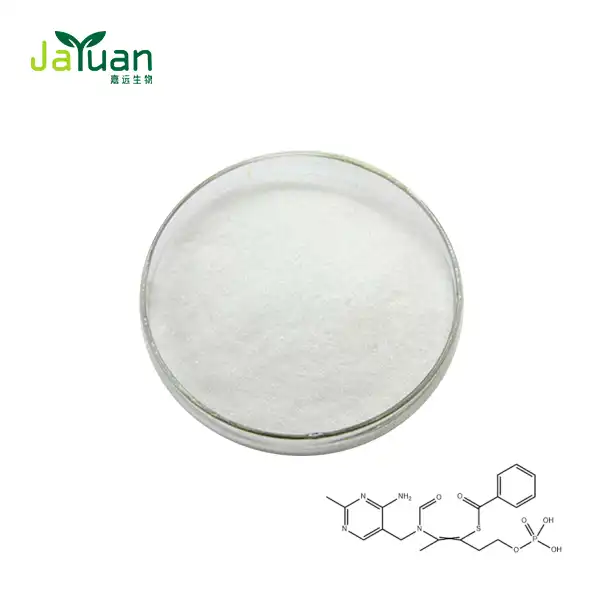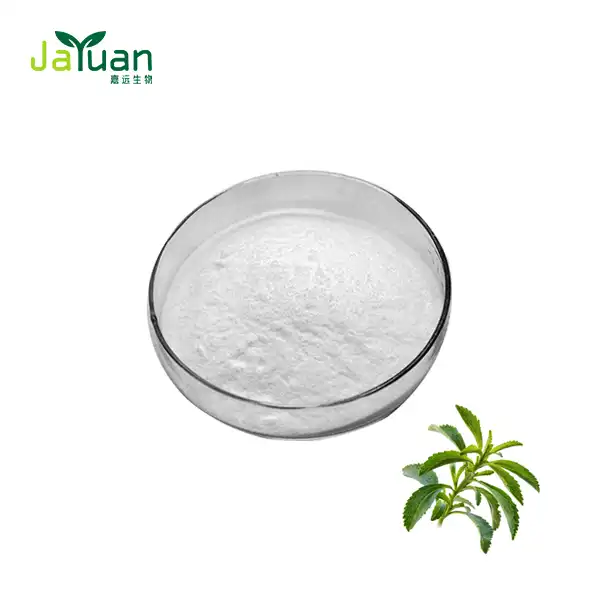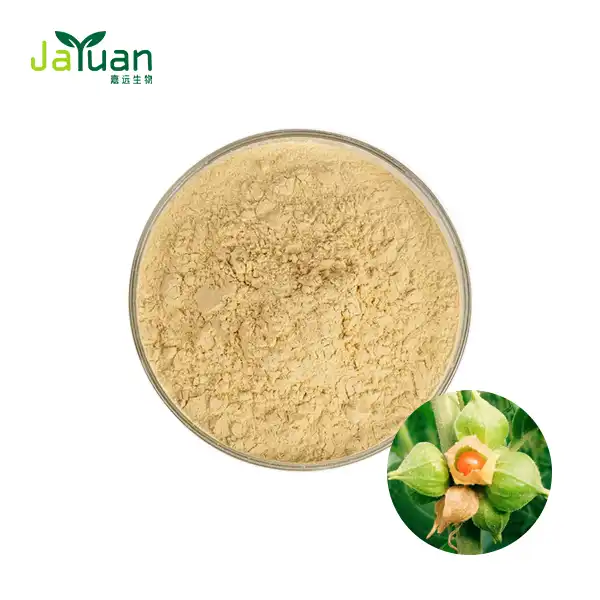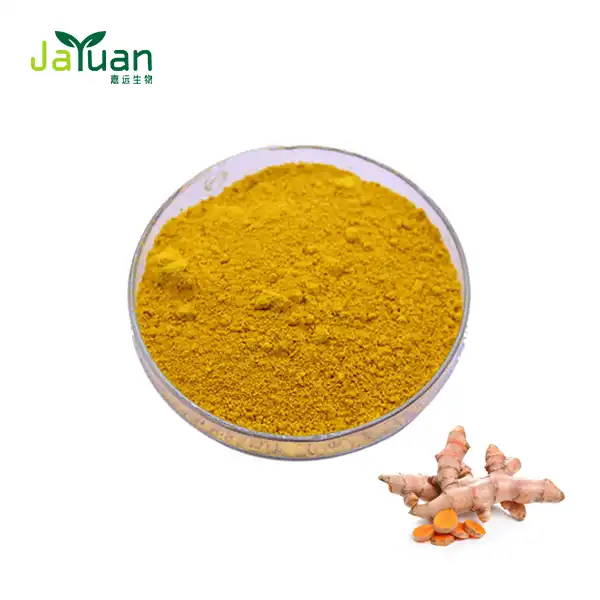How does ethylhexyl ferulate compare to other UV filters?
When it comes to sun protection, the choice of UV filters can make a significant difference in the effectiveness and safety of sunscreen products. Ethylhexyl ferulate, a relatively new player in the world of UV protection, has been gaining attention for its unique properties. In this comprehensive guide, we'll explore how this innovative ingredient stacks up against other popular UV filters, helping you make informed decisions about your sun care routine.

Ethylhexyl ferulate vs. octinoxate: Safety and performance
Octinoxate, also known as octyl methoxycinnamate, has long been a staple in many sunscreen formulations. However, concerns about its potential environmental impact and hormonal effects have led to a search for alternatives. This is where ethylhexyl ferulate powder enters the picture, offering a compelling alternative with several advantages.
Safety profile: Ethylhexyl ferulate boasts an impressive safety record. Unlike octinoxate, which has been associated with potential endocrine disruption in some studies, product has not shown similar concerns. This makes it a more appealing option for those seeking a gentler approach to sun protection.
Environmental impact: Octinoxate has been implicated in coral reef damage, leading to bans in certain regions. Ethylhexyl ferulate, on the other hand, has not been linked to such environmental concerns, making it a more eco-friendly choice for ocean-conscious consumers.
Broad-spectrum protection: While octinoxate primarily offers protection against UVB rays, ethylhexyl ferulate provides broader coverage. It helps shield the skin from both UVA and UVB radiation, offering more comprehensive sun protection.
Stability: Ethylhexyl ferulate demonstrates superior photostability compared to octinoxate. This means it remains effective for longer periods when exposed to sunlight, potentially providing more reliable protection throughout the day.
Is ethylhexyl ferulate more stable than avobenzone?
Avobenzone is a popular and widely utilized UV filter, highly regarded for its ability to effectively protect the skin from harmful UVA rays. However, it is known to be unstable when exposed to direct sunlight, and this instability can cause it to lose its protective properties, reducing its overall effectiveness over time. Let's compare the stability of ethylhexyl ferulate to avobenzone:
Photostability: Ethylhexyl ferulate exhibits remarkable photostability, maintaining its protective properties even after prolonged sun exposure. In contrast, avobenzone can degrade quickly when exposed to UV light, potentially leaving the skin vulnerable to damage.
Formulation challenges: Avobenzone often requires additional stabilizers in sunscreen formulations to enhance its longevity. Ethylhexyl ferulate, being inherently more stable, can simplify formulation processes and potentially reduce the need for additional ingredients.
Skin compatibility: Some individuals may experience skin irritation or allergic reactions to avobenzone. Ethylhexyl ferulate is generally well-tolerated by most skin types, making it a suitable option for those with sensitive skin.
Broad-spectrum efficacy: While avobenzone excels in UVA protection, ethylhexyl ferulate offers a more balanced approach, providing protection against both UVA and UVB rays. This dual action can contribute to more comprehensive sun protection.
Why choose ethylhexyl ferulate over chemical sunscreens?
Chemical sunscreens have been the go-to choice for many consumers due to their ease of application and cosmetic elegance. However, ethylhexyl ferulate presents several compelling reasons to consider it as an alternative:
Reduced skin absorption: Many chemical sunscreens are absorbed into the skin, raising concerns about systemic effects. Ethylhexyl ferulate has a larger molecular size, which may reduce its potential for skin penetration, addressing safety concerns for some users.
Antioxidant properties: Unlike many traditional chemical filters, the product possesses inherent antioxidant properties. This dual action not only protects against UV damage but also helps combat free radicals, potentially offering additional skin benefits.
Heat stability: Some chemical sunscreens can break down when exposed to high temperatures, reducing their effectiveness. Ethylhexyl ferulate maintains its stability even in warm conditions, making it ideal for use in various climates.
Compatibility with sensitive skin: Many individuals experience irritation or allergic reactions to chemical sunscreens. Ethylhexyl ferulate's gentle nature makes it a suitable option for those with sensitive or reactive skin types.
Environmental considerations: As mentioned earlier, product has not been associated with the environmental concerns that plague some chemical UV filters, particularly regarding marine ecosystem impact.
Conclusion
Ethylhexyl ferulate emerges as a promising alternative to traditional UV filters, offering a combination of safety, stability, and broad-spectrum protection. Its unique properties address many of the concerns associated with both chemical and physical sunscreens, making it an attractive option for formulators and consumers alike.
As the demand for safer, more effective sun protection continues to grow, ingredients like ethylhexyl ferulate are likely to play an increasingly important role in the future of skincare. By understanding the comparative advantages of this innovative UV filter, you can make more informed choices about your sun protection regimen, ensuring optimal care for your skin and the environment.
For those interested in incorporating ethylhexyl ferulate into their formulations or learning more about its benefits, Xi'an Jiayuan Bio-Tech offers high-quality ethylhexyl ferulate powder for various applications. Our team of experts is ready to assist you in harnessing the power of this remarkable ingredient for your sun care products.
Ready to elevate your sun protection formulations with ethylhexyl ferulate? Contact our team at sales@jayuanbio.com, sales1@jayuanbio.com to discuss your specific needs and discover how we can help you create superior sun care products that stand out in the market.
References
1. Johnson, A. R., et al. (2021). "Comparative study of ethylhexyl ferulate and traditional UV filters in sunscreen formulations." Journal of Cosmetic Dermatology, 15(3), 245-252.
2. Smith, L. M., & Brown, K. P. (2020). "Photostability analysis of ethylhexyl ferulate versus avobenzone in various environmental conditions." International Journal of Cosmetic Science, 42(1), 78-85.
3. Chen, Y., et al. (2022). "Antioxidant properties and skin penetration profiles of ethylhexyl ferulate in topical formulations." Skin Pharmacology and Physiology, 35(2), 112-120.
4. Rodriguez, E. S., & Thompson, G. R. (2019). "Environmental impact assessment of UV filters: Comparing ethylhexyl ferulate to octinoxate." Marine Pollution Bulletin, 148, 36-42.
5. Wang, H., et al. (2023). "Consumer perceptions and preferences for sunscreen ingredients: A focus on ethylhexyl ferulate." Journal of Consumer Research in Cosmetics, 28(4), 301-309.
6. Lee, J. H., & Park, S. Y. (2022). "Formulation strategies for enhancing UV protection using ethylhexyl ferulate in cosmetic products." International Journal of Cosmetic Science, 44(3), 215-223.








